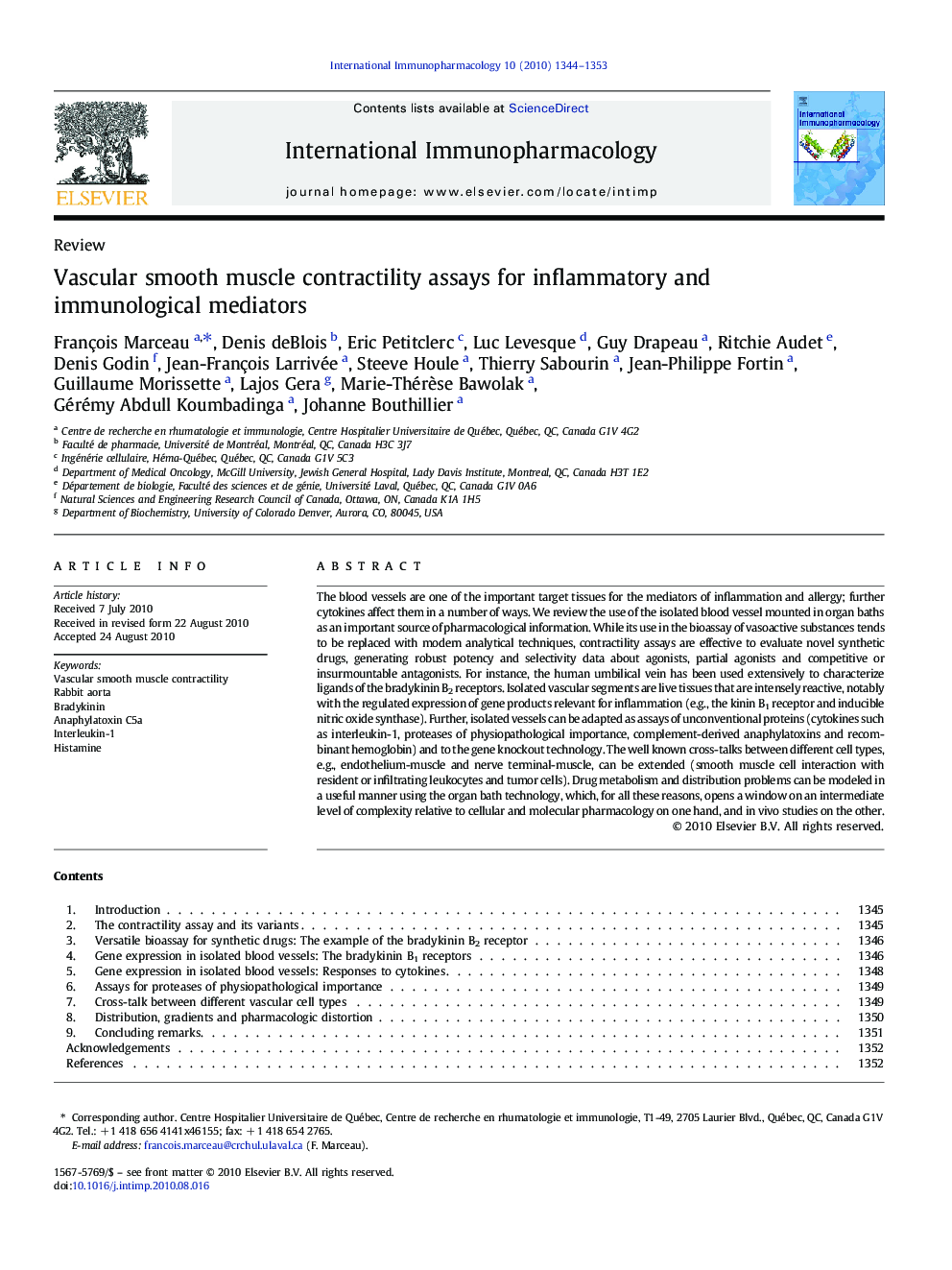| Article ID | Journal | Published Year | Pages | File Type |
|---|---|---|---|---|
| 2541147 | International Immunopharmacology | 2010 | 10 Pages |
The blood vessels are one of the important target tissues for the mediators of inflammation and allergy; further cytokines affect them in a number of ways. We review the use of the isolated blood vessel mounted in organ baths as an important source of pharmacological information. While its use in the bioassay of vasoactive substances tends to be replaced with modern analytical techniques, contractility assays are effective to evaluate novel synthetic drugs, generating robust potency and selectivity data about agonists, partial agonists and competitive or insurmountable antagonists. For instance, the human umbilical vein has been used extensively to characterize ligands of the bradykinin B2 receptors. Isolated vascular segments are live tissues that are intensely reactive, notably with the regulated expression of gene products relevant for inflammation (e.g., the kinin B1 receptor and inducible nitric oxide synthase). Further, isolated vessels can be adapted as assays of unconventional proteins (cytokines such as interleukin-1, proteases of physiopathological importance, complement-derived anaphylatoxins and recombinant hemoglobin) and to the gene knockout technology. The well known cross-talks between different cell types, e.g., endothelium-muscle and nerve terminal-muscle, can be extended (smooth muscle cell interaction with resident or infiltrating leukocytes and tumor cells). Drug metabolism and distribution problems can be modeled in a useful manner using the organ bath technology, which, for all these reasons, opens a window on an intermediate level of complexity relative to cellular and molecular pharmacology on one hand, and in vivo studies on the other.
Graphical AbstractFigure optionsDownload full-size imageDownload as PowerPoint slideResearch Highlights► Isolated blood vessels respond to a wide array of inflammatory mediators. ► Such contractility assays are robust bioassays for synthetic drugs. ► Cross-talks between vascular cell types can be studied utilizing such bioassays. ► Resident or infiltrating leukocytes and tumor cells influence vascular tone. ► Drug metabolism and distribution can be modeled in live vascular segments.
